After taking the Spirit of Tasmania ferry from Devonport to Geelong we completed a 1,500km tour in January 2025, avoiding bushfires and heatwaves. There had just been big fires in the Grampians, but we adjusted the course. Then, a week after we had a coffee break with the locals in Dimboola, the town was evacuated, and the highway was closed. Some would say it’s a bad idea to tour here in January, but it was fine. Heatwaves come and go, often only lasting a few days. You can adjust your route, you can schedule a rest day, you can leave early in the morning and you can be lucky. We even mostly had tail winds.
The initial target was the Aboriginal site at Lake Condah, then the Murtoa Stick Shed, then the Coorong, the mouth of the Murray, the Fleurieu, the Warrawong Sanctuary and finally, Adelaide. We would work out the in-between bits along the way.
I’m testing out various new things. The main one is new handlebars. I’m calling them “Barcoo”.
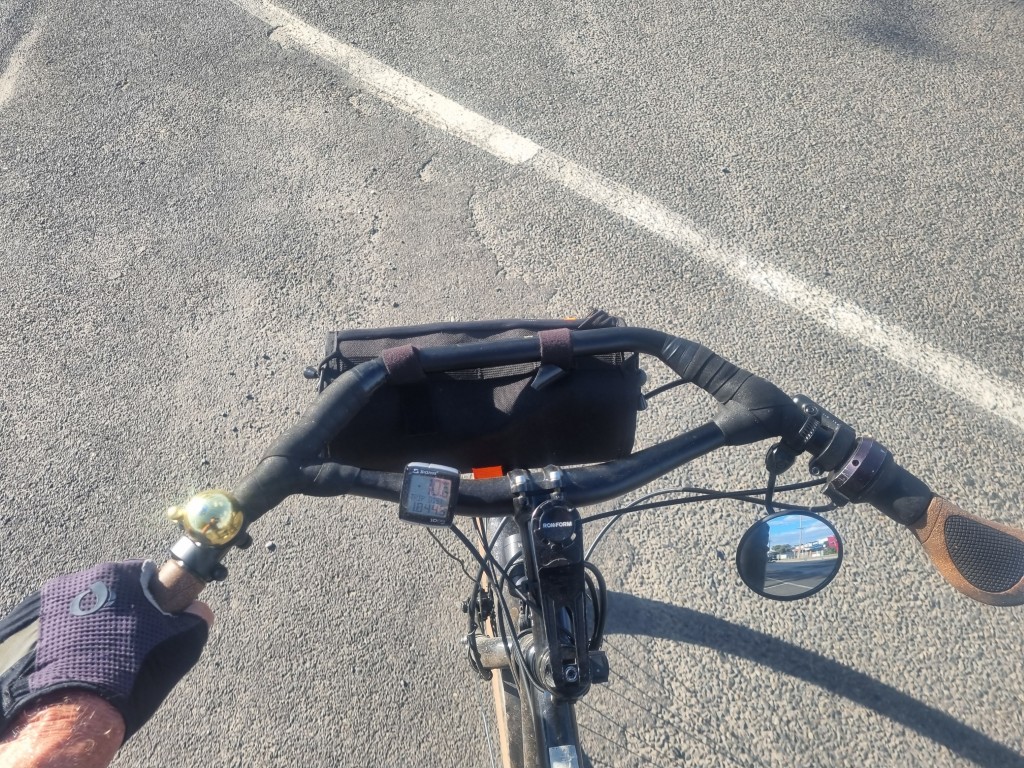

The bars are swept back with an added front section. There are special Ergon GC1 grips that “correct” for the angle. There are bags made to hang down from the front section. We need to know how this bar set-up works out. (see below for more information)
Another test on this ride is of a light to alert oncoming cars from behind. There is a switchable headlight facing rearward.
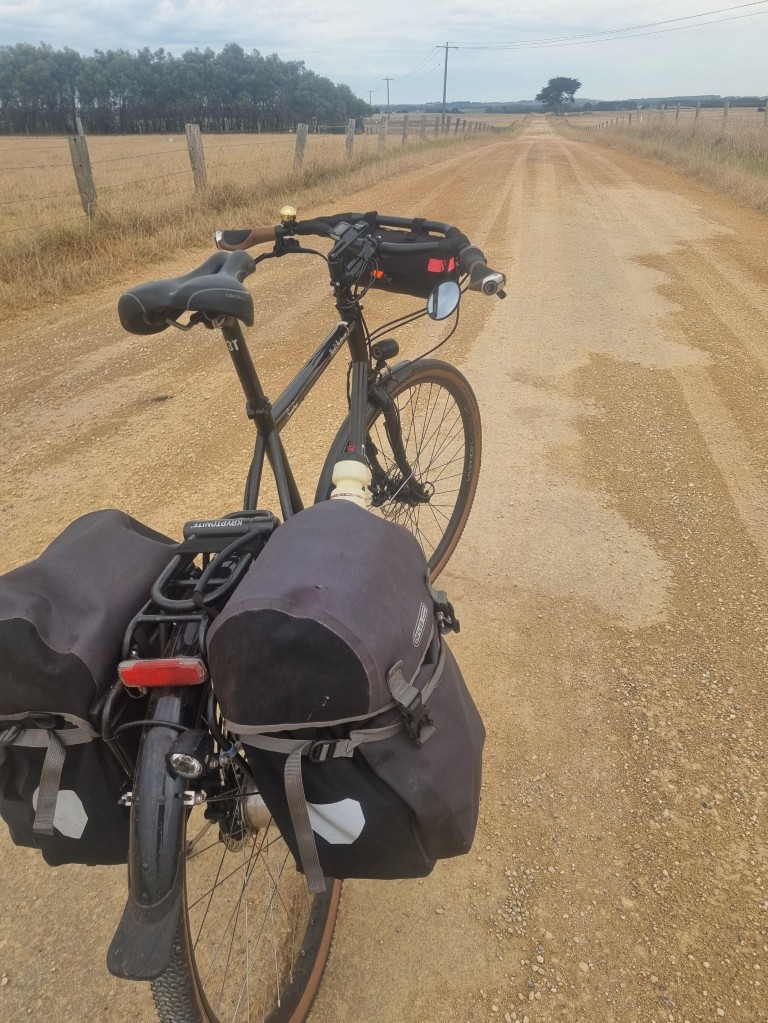
When you are riding and have a buddy a few hundred metres behind, in your mirror, their headlight is very noticeable. Hence the idea of projecting a headlight rearward and being able to “on/off” it after seeing particular vehicles in the mirror and in particular places. But, after trying this out, we decided it’s not much of a benefit. If we must ride on some highway sections where there is fast traffic, a road shoulder is what is really needed.
This time there have been frequent gravel roads, and the grip of the 45mm has been valuable.
At 45mm it is still a relatively narrow tyre. We compare it to a more traditional 40mm Marathon.
On unsealed roads, when there is no loose material, the embedded gravel and corrugations are bumpy in these parts.
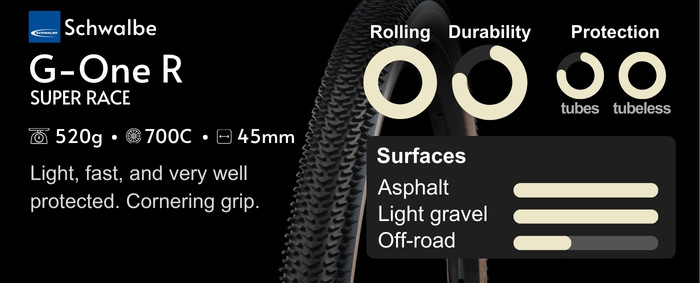
The 45mm tyres at 50psi were more comfortable than the traditional 40mm touring tyres. Kevlar belted, 40mm tyres, at 60psi, are less supple and feel rougher.
In loose material, thinner tyres sink in further. It’s not that thinner tyres don’t work; On good tar they are excellent. But in these regions, on mixed roads, the G-ONE R’s were ideal.
There are catheads in this part of the world too, so the 45mm tyres have been running tubeless, with 60g of Schwalbe solution per tyre and a spare bottle with 60g in the luggage.
Before the start of this ride the Gates belt had already lost one tooth but we didn’t replace it. It had already travelled 32,000km. Going around the Grampians there was a lot of sand, and the belt felt increasingly gritty. Washing it from the water bottle about four times a day seemed to fix that. But, over the coming days, more teeth came off and inspections showed several other teeth were half-loose.

Omafiets in Sydney got a new belt delivered to Murray Bridge in 48 hours after notice. We didn’t need to run the belt down to this point and next time we probably won’t. But it is good to know how long they last. And it’s good to use things for as long as they work. There are people ready to look after Vivente riders. You don’t need to carry much with you. This belt took 33,000 km to wear out and only 15 minutes to change. Read more about Gates belt-life expectancy and belt replacement.
For this ride we use a different front through axle. This one uses a 6mm Alen key, instead of the pull-out lever type that we use on Vivente bikes. A few people have found the pull-out lever annoying, so we have brought in some of these 6mm hex-key ones. The only time it was touched of course was packing at Adelaide airport.
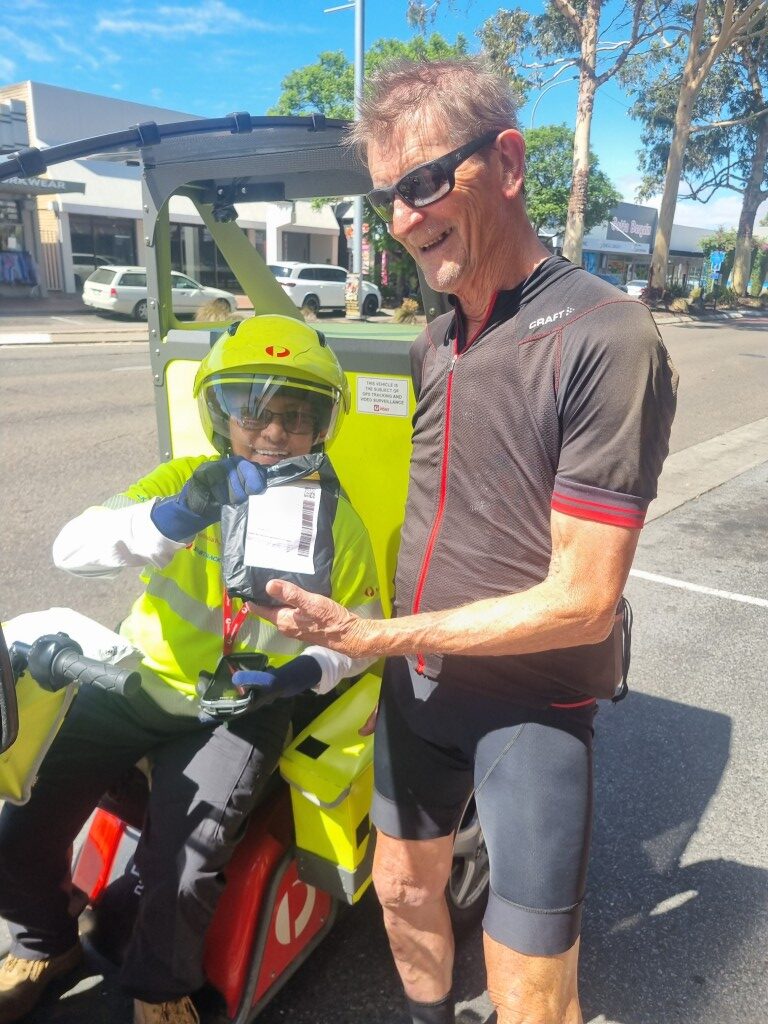
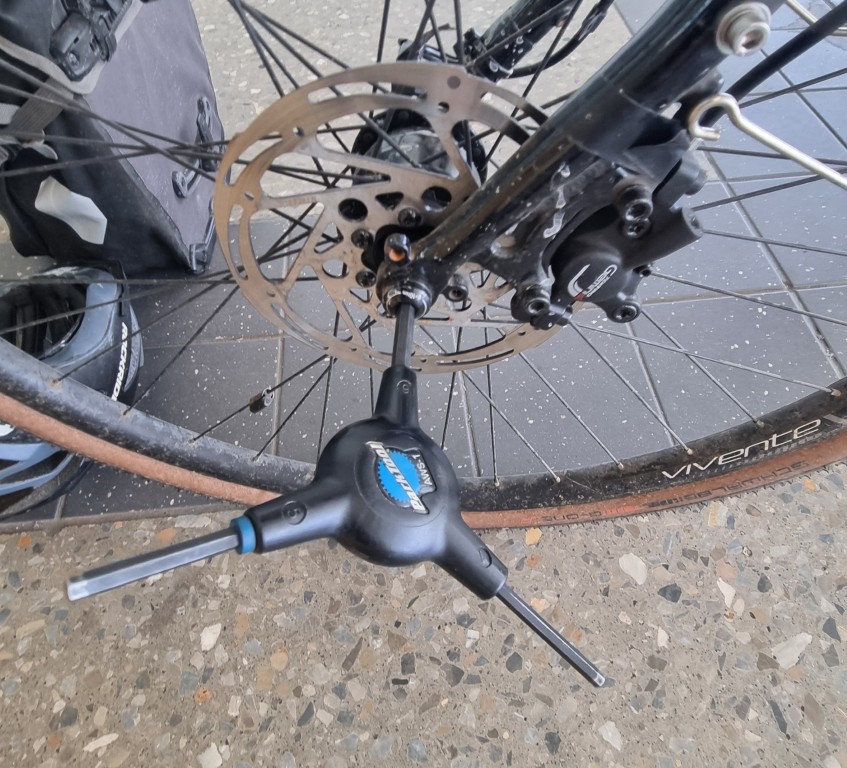
Lake Condah
Lake Condah is a day’s ride west of Warrnambool, in Gunditjmara country. You stay at a little town called Heywood and it is a 30km out-and-back ride to the site.
About 30,000 years ago, a volcano left lava flows crisscrossing wetlands and shallow lakes. The lines of lava created a maze of routes for migrating short-finned eels. They had floated down from the Coral Sea and swam up what is now called Darlot Creek. Clans of the Gunditjmara people learned ways of farming them and there were permanent settlements based on eel farming and trade. About 200 stone structures that were houses remain. For thousands of years, eels were kept in dammed sections. Conical one-way nets let only the small eels through. It is thought to be the oldest practice of aquaculture on this planet. The Henty brothers moved in, stole the land, drained the wetlands for grazing and dried up the lakes. The few Indigenous people that survived were herded into the Condah Mission, where they were not even allowed to speak their language.

The lake was dry by 1955. Post WW2 soldier settlement had been the last straw. But 30 years of activism brought about policy change. (Onus V Alcoa) The lake returned in 2012 and is still recovering. Eels are back! It is now a declared World Heritage Site.
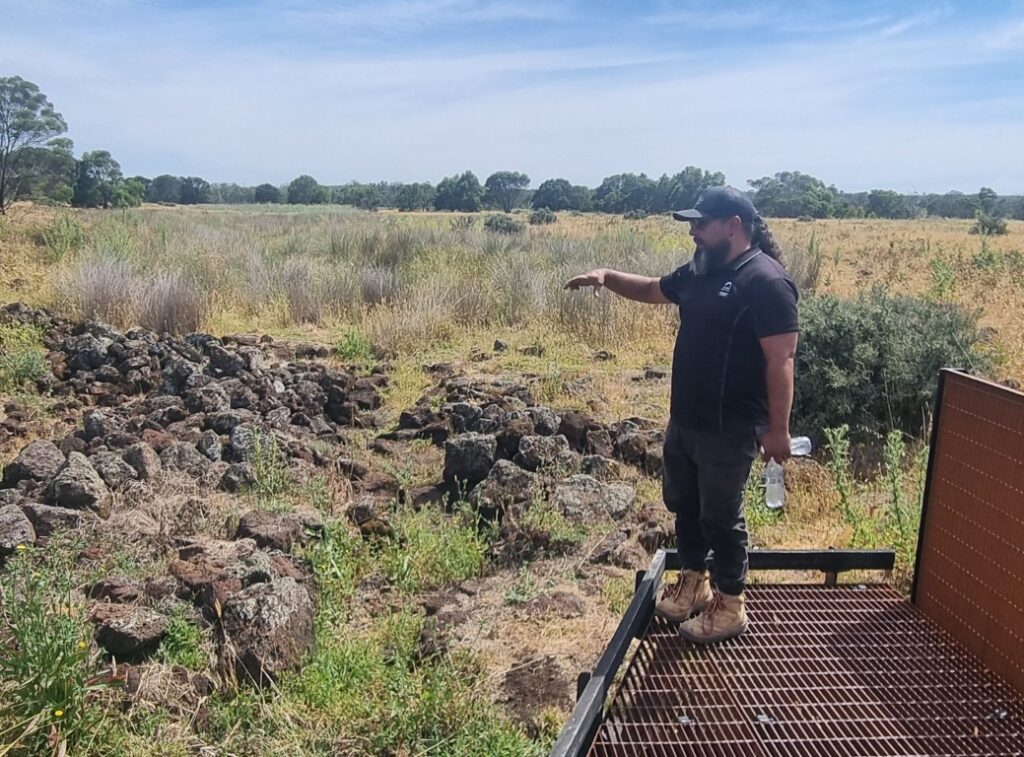
Leaving Condah as we head North, and, because of last week’s bushfires, we skirt to the east of the Grampians. We were in and out of fire zones, but the weather got better.
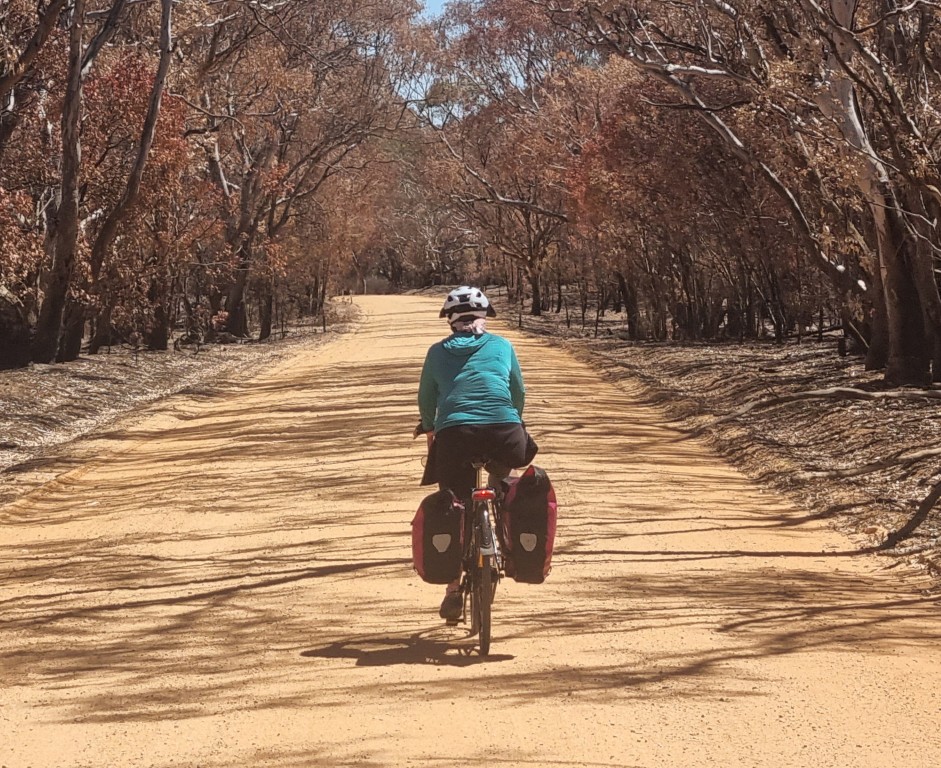
Just out of Horsham there is a huge sheep saleyard. The sales are on Wednesday mornings, and this was an opportunity to get close to this local industry. There was a yarding of just over 10,000 sheep.
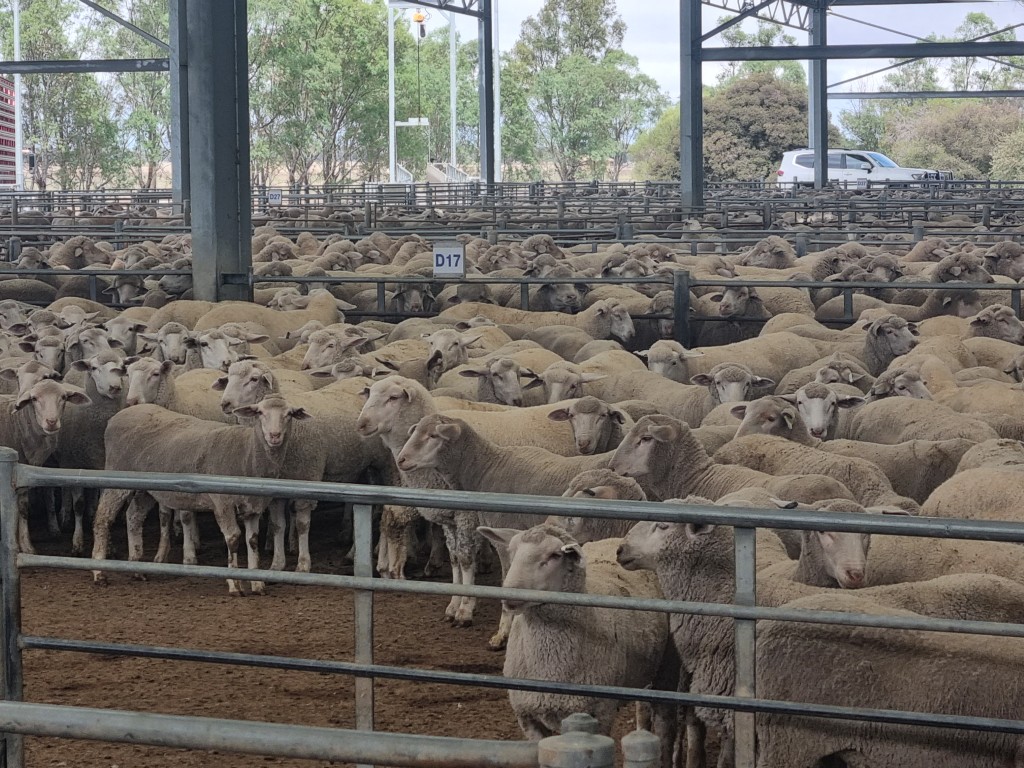
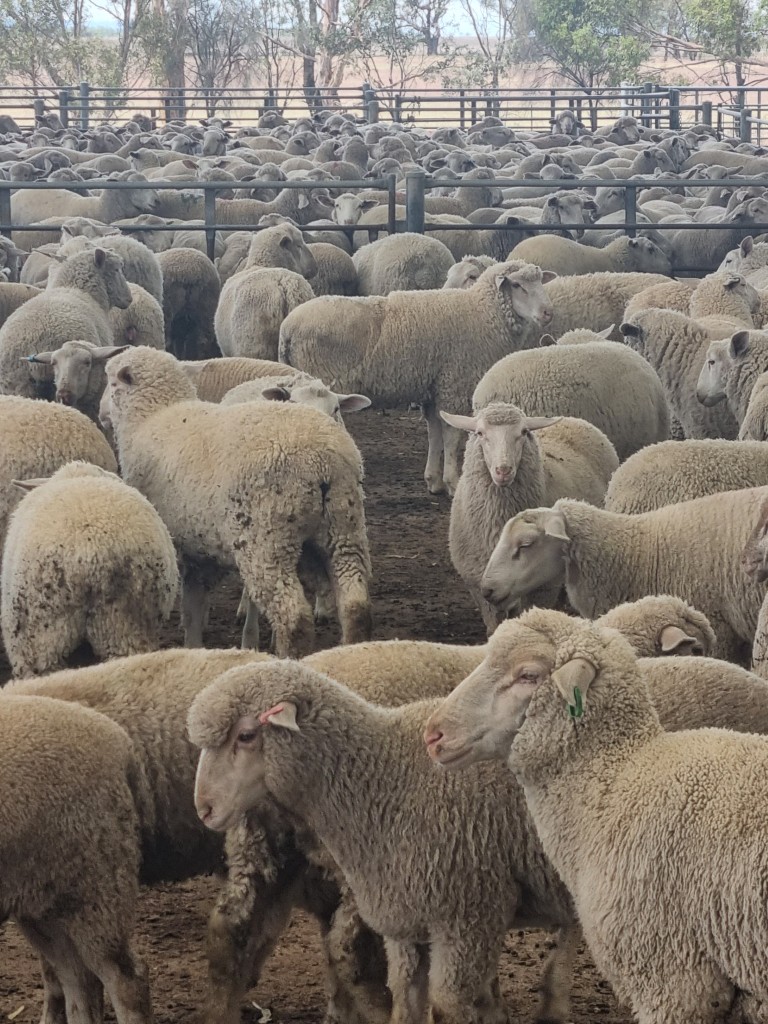
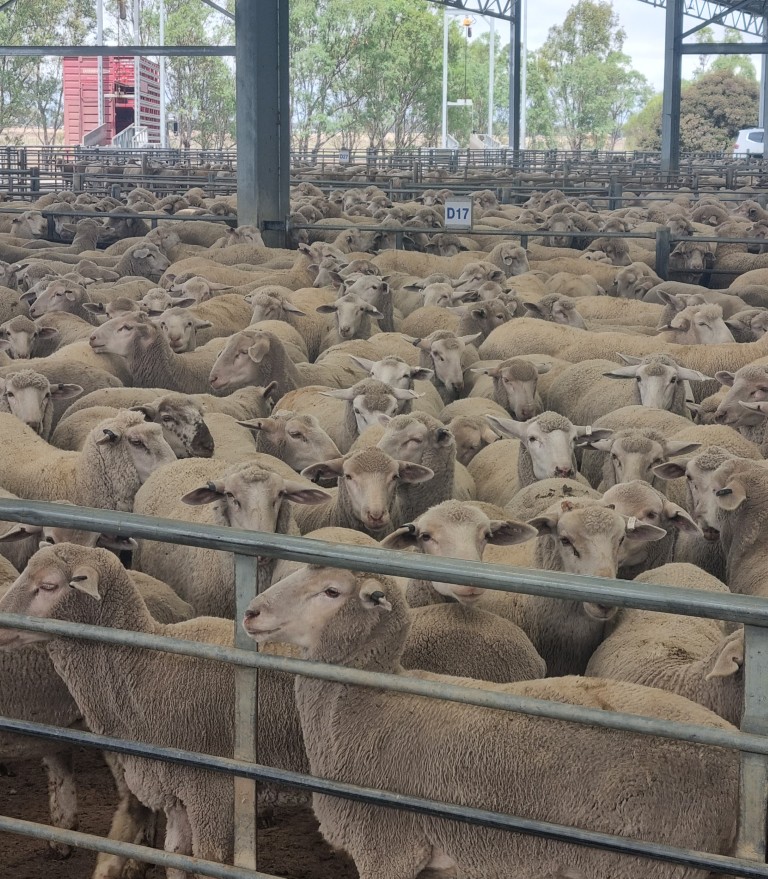
Have you ever had to reverse a car with a trailer? Can you imagine what it would be like reversing a semi-trailer with an extra trailer behind that? It’s extraordinary to watch the skill of the drivers. Once in place, the driver has to load the sheep. They have sheepdogs on board rearing to help. Muzzles are mandatory.
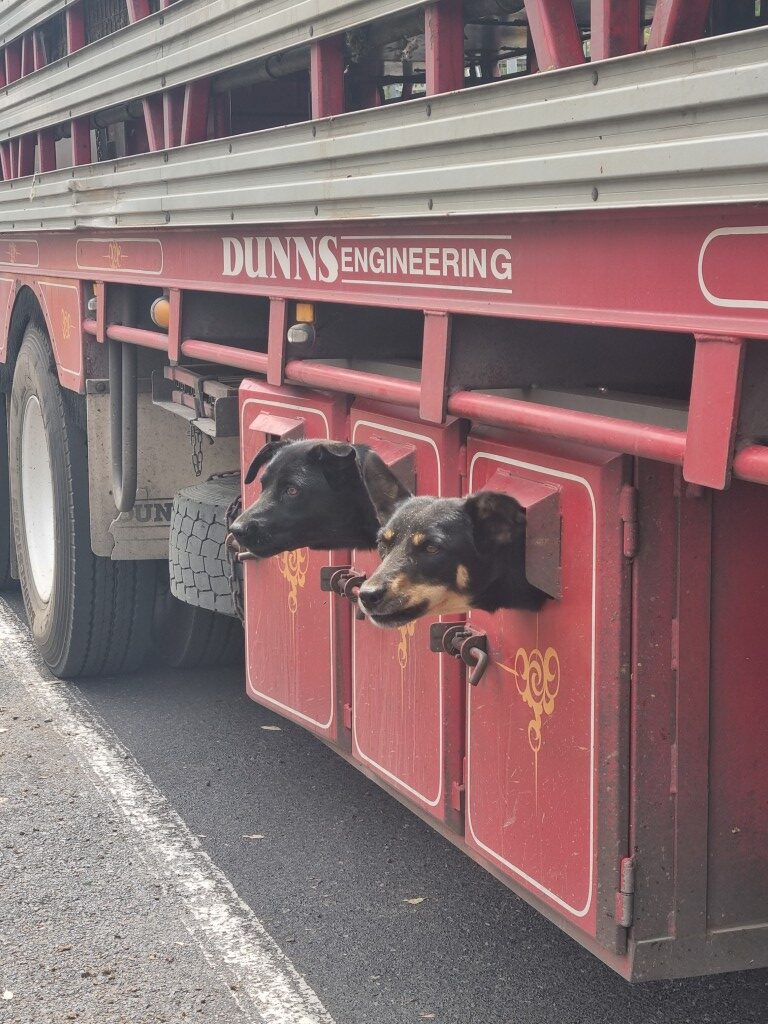
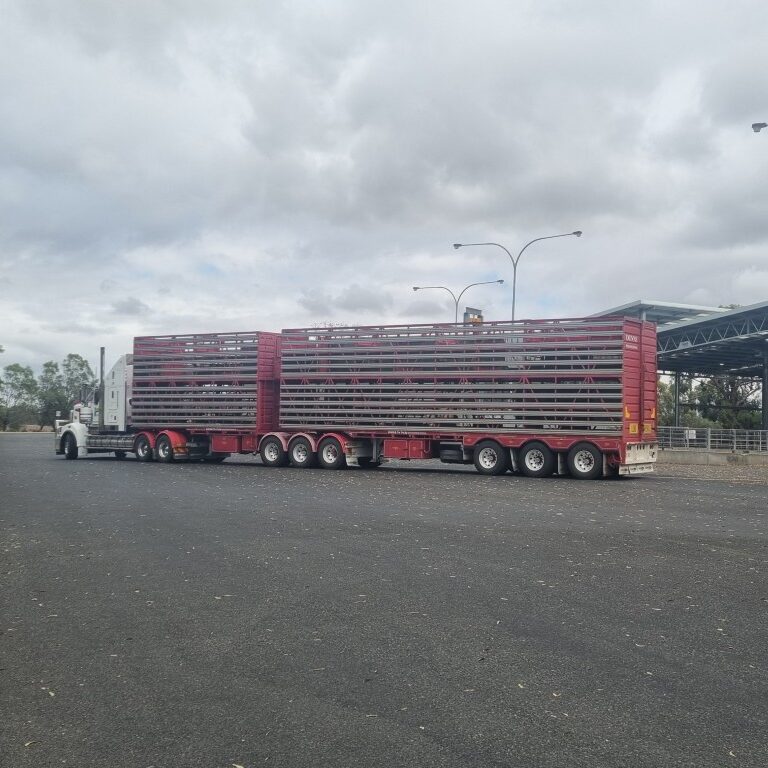
The Murtoa Stick Shed
In 1941, the war was preventing the export of wheat. There was a shortage of jute bags that wheat was mostly stored and transported in. A bumper crop was forecast.
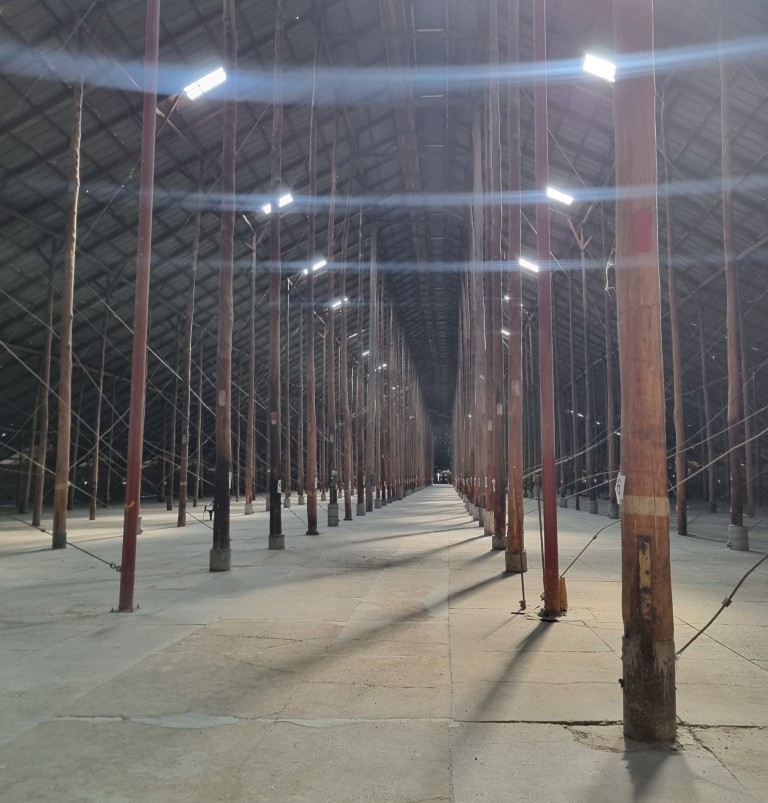
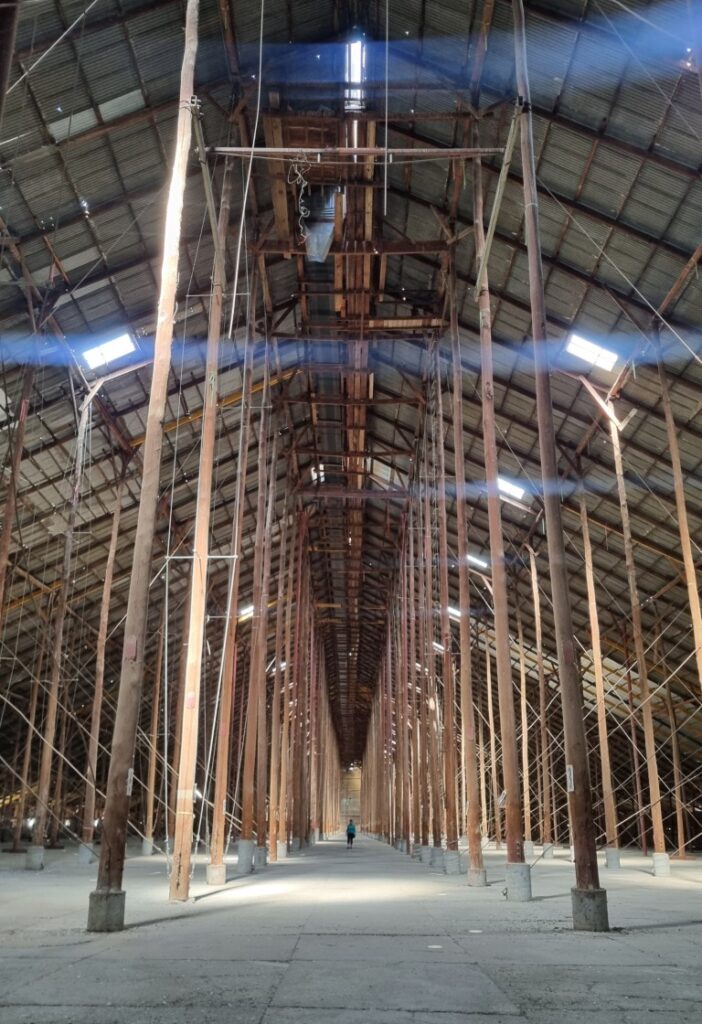
The Grain Elevator Board decided to build 29 grain storage sheds, and it had to be done fast. Only this one at Murtoa had a concrete floor and it is the only one still standing. The roof is over five acres. It was built in only four months.
Pink Lake
Just off the road between Dimboola and Nhill is the Pink Lake. There are a few others that have these particular algae, and they change colour from time to time. It is a bit of luck to be able to see pink and our luck is good.

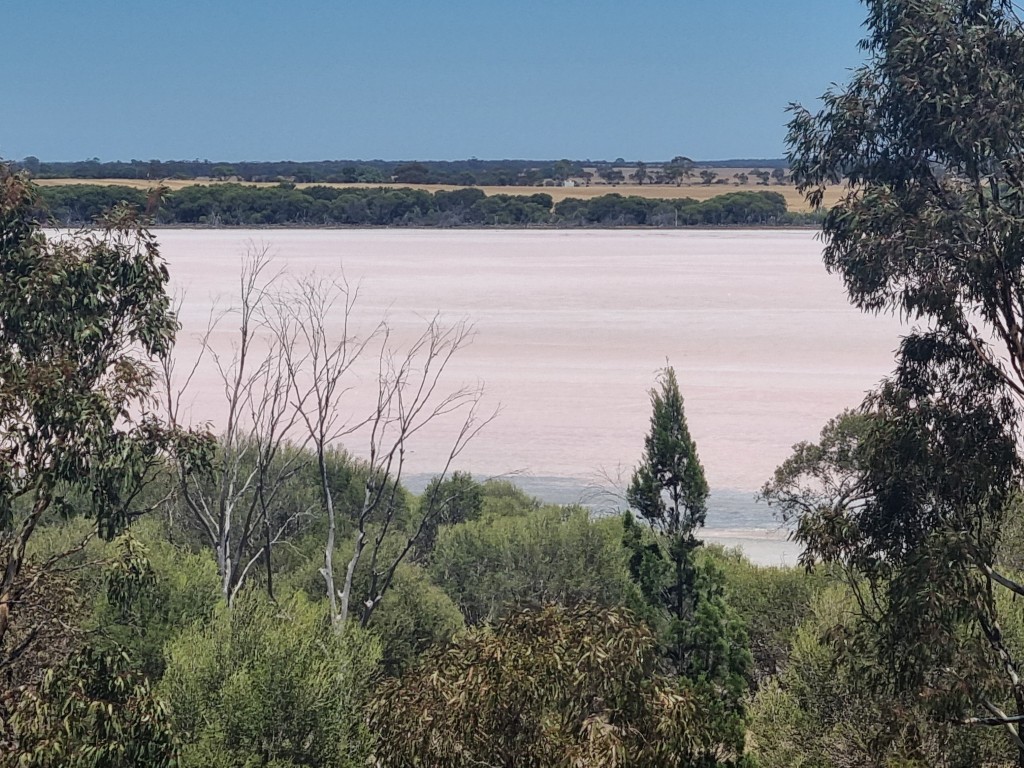
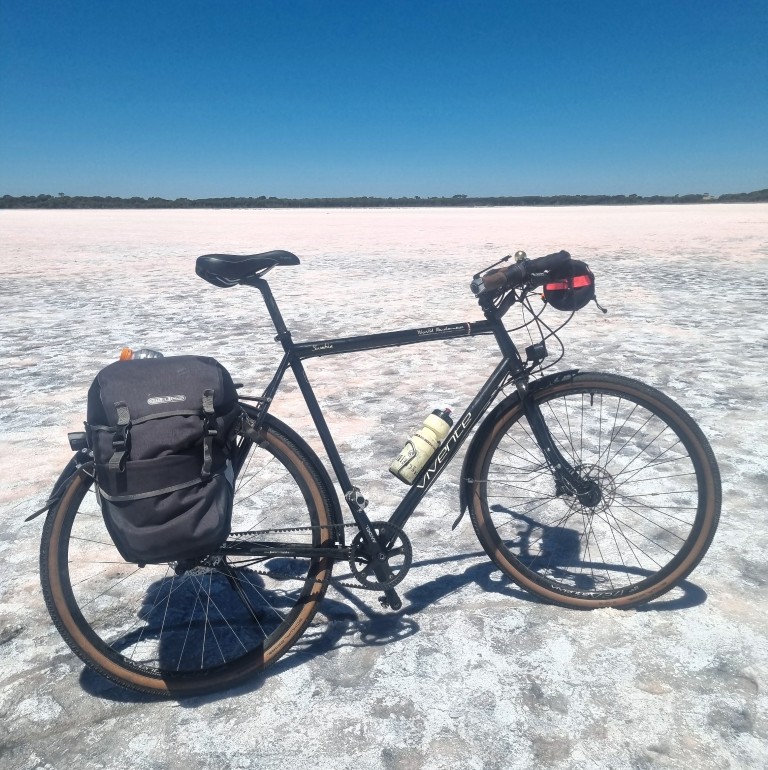
Although it has many side trips, this tour is from Geelong to Adelaide. There is a train, called The Overland, which runs twice a week each way between Melbourne and Adelaide and allows fully assembled bicycles on board. That’s always interesting when planning a three-week bike tour. If you are riding around Australia, you don’t catch a train. But we didn’t need to ride the Bordertown to Murray Bridge section. It is a flat 200km stretch of semidesert, that is mostly straight, and with almost no shop. It’s a busy highway. Being able to just wheel the bikes on is appealing.

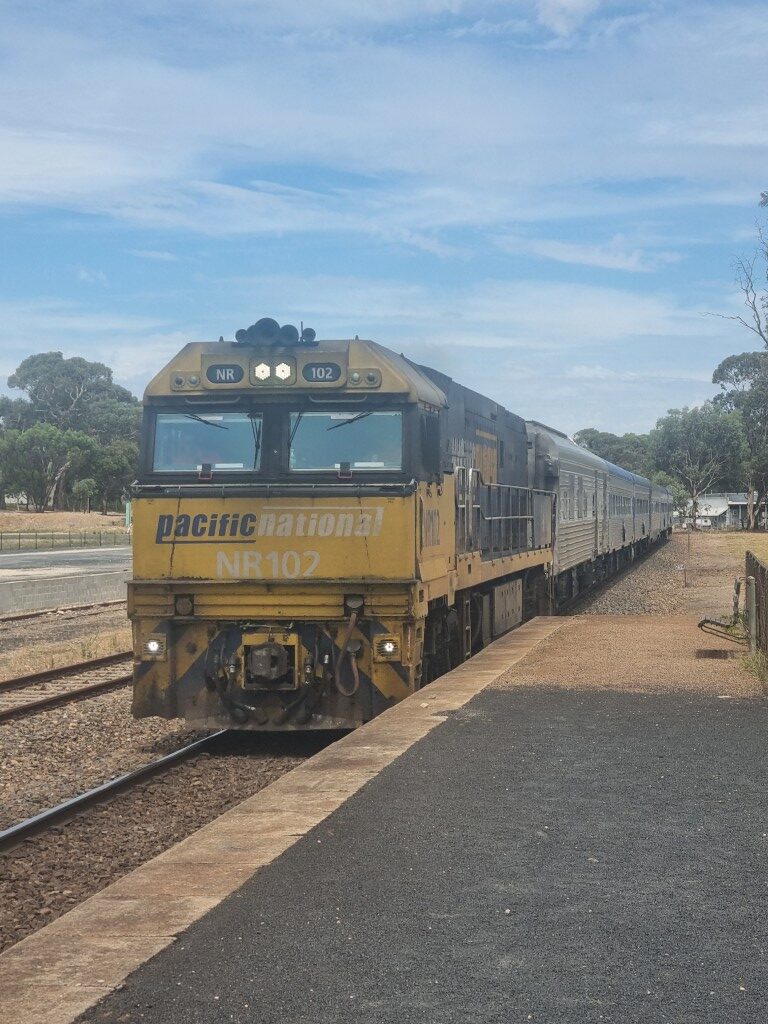
We got to ride through Dimboola and Nhill, to see the Little Desert National Park and the Pink Lake. Then at the SA border we were on the train, covering the 200km in 2 hours!
South of Murray Bridge the mighty Murray flows into Lake Alexandrina and Lake Albert. These fresh-water lakes are about 40km across and are a bird watcher paradise.
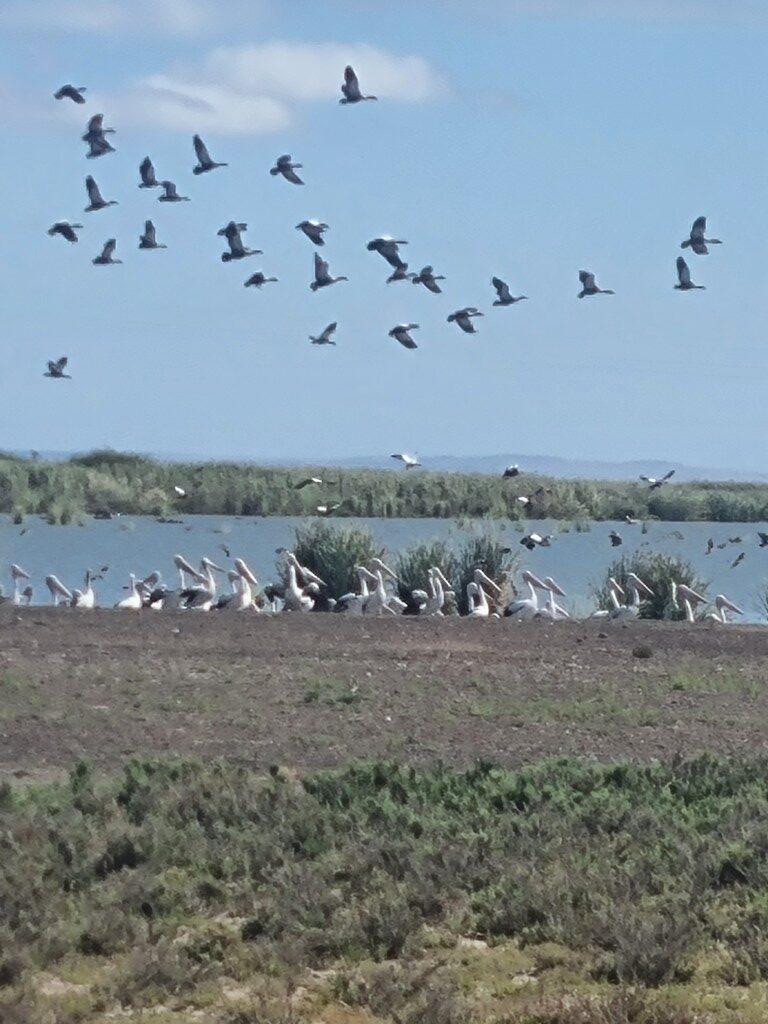
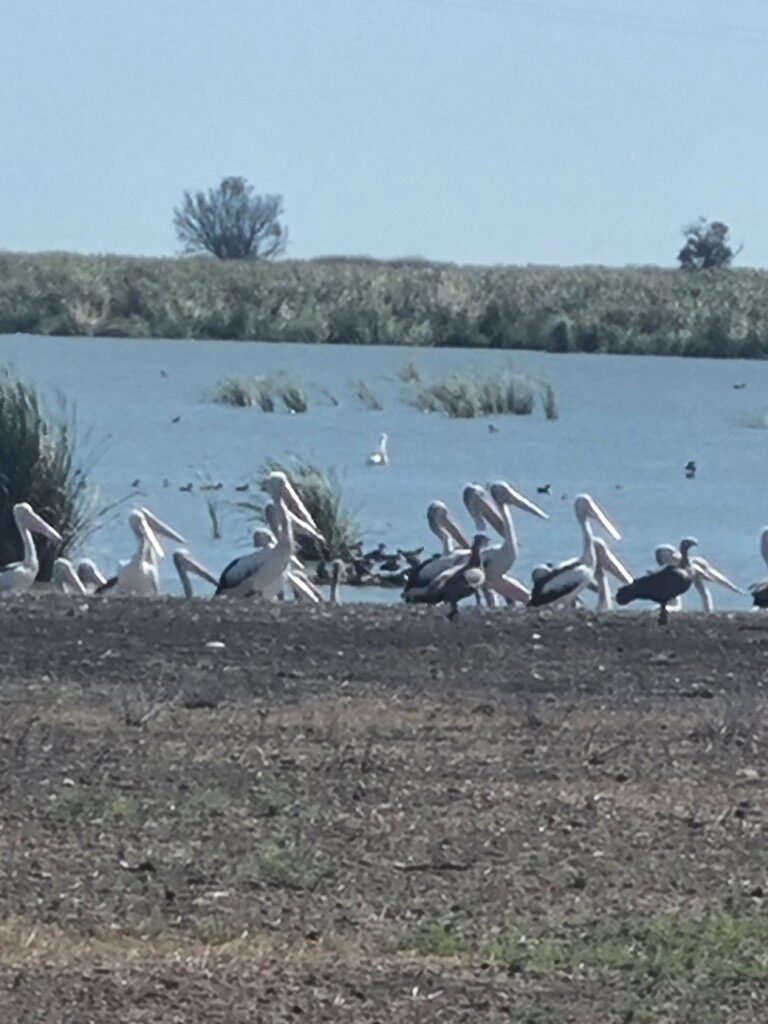
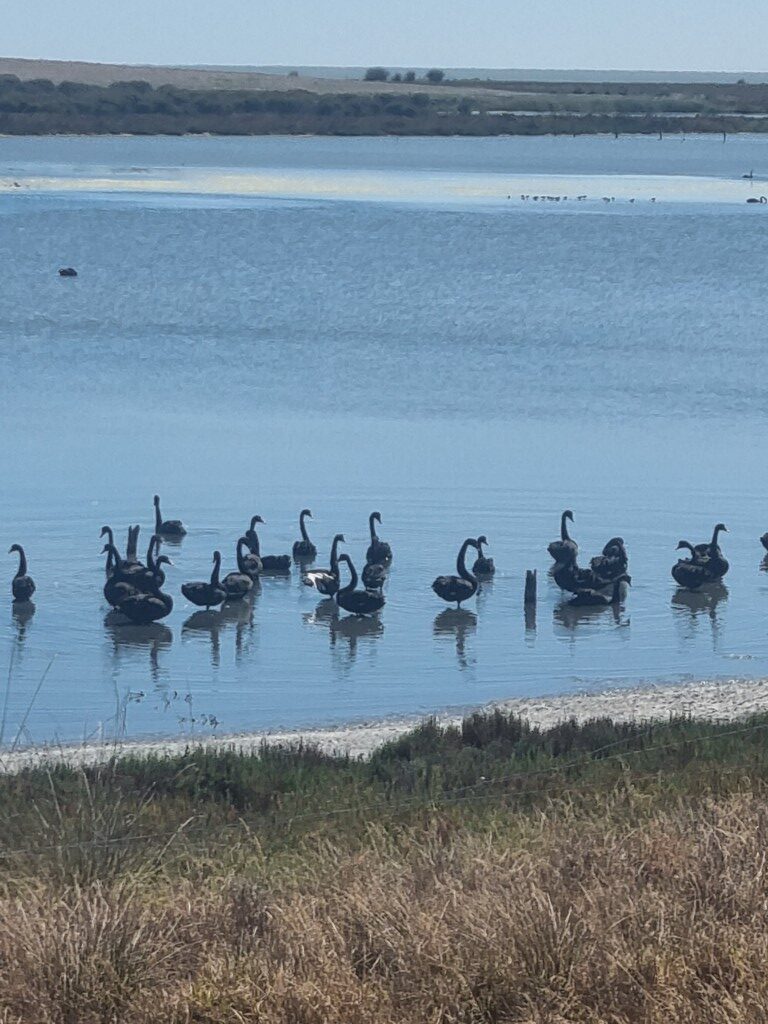
On the eastern side, between the desert and the ocean, is a narrow neck of sand dunes stretching 150km, called The Coorong. It is a fantastic landscape. Rainfall is so low that there are no water courses. In the hinterland there are numerous “ephemeral” lakes which, now being summer, are dry salt pans. The juxtaposition of the permanent freshwater lakes and these salt pans, sometimes only metres apart, is amazing.
In this pic, the white in the middle is salt. The grey-blue behind the white is fresh water in Lake Alexandrina.

Ferries cross the Murray River and at Narrung lakes. They are free and run 24/7. At Narrung, which is a fantastic side trip out of Meninge, the operator said she sees only one bike about every two months. But at the Murray, 10 bikes a week.
Heading down the west side, in the Currency Creek area, there are Aboriginal Canoe Trees. It’s thought that the canoes were cut at least 200 years ago. In the movie Ten canoes, there is a scene where this was done. As it is being cut it is held all around by many hands, so it doesn’t fall and crack. The cut bark is then soaked in water to soften it and later tied together at the ends using kangaroo sinews and plaited reeds.
On the Southwestern side of the big lakes is Goolwa and the mouth of the Murray River to the Southern Ocean. In times of low river flow, saline water used to come into the lakes and up the river. To prevent this, and to manage the river height, in the 1930s “barrages” were built. The intention was to foster irrigation along the river and enhance town water supplies. Currently, the fresh water is 0.75m above sea level. So the barrages are also dams.
From the Goolwa area (Goolwa South) to Encounter Bay just West Victor Harbor, is one of the best ocean bike rides anywhere. It reminded me of the French Riviera. Gorgeous coastal views along a 28km bike path. Many worked on it, but a local hero got it over the line. It’s called the Encounter Bikeway.
After weeks of dry, flat country it’s a nice change to arrive in the Fleurieu peninsula. This is the home of the Tour Down Under, the Adelaide Hills, the Mount Lofty ranges, the Coonawarra and McLarenvale wine regions and where Hans Hysen painted many of his familiar masterpieces. This is South of the Goyder Line which demarcates rainfall in South Australia. A Mediterranean climate with mild wet winters and hot dry summers. Only 50 km to the east, in the rain shadow, we were in a desert.
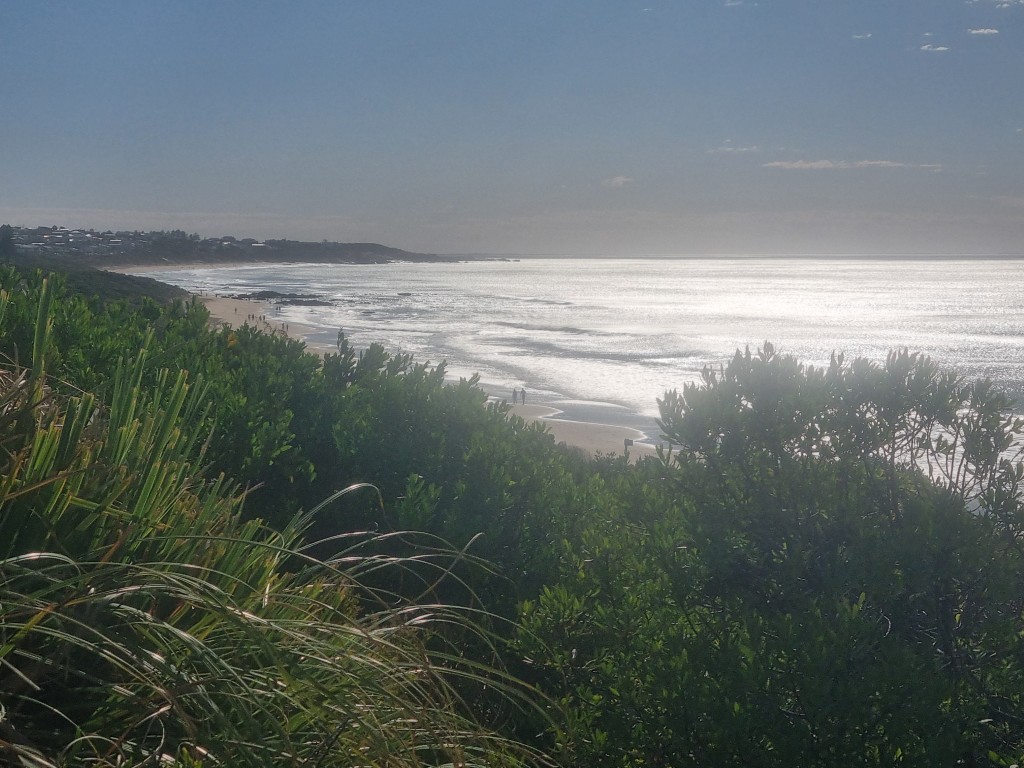
Rather than take the easy way around the West coast, we head up the centre through Meadows to Hahndorf, wanting to stay in the bush as long as possible. After weeks of flat, the climbs feel brutal. It’s 35 degrees and windy. But the next day we had that marvelous 600m descent from Crofters into Adelaide.
During this ride there were good roadside fruit and berries (figs, plums, grapes and blackberries) and we saw a lot of wildlife including eagles, koalas, echidna, kangaroos and beautiful Lowland Copperhead snakes.
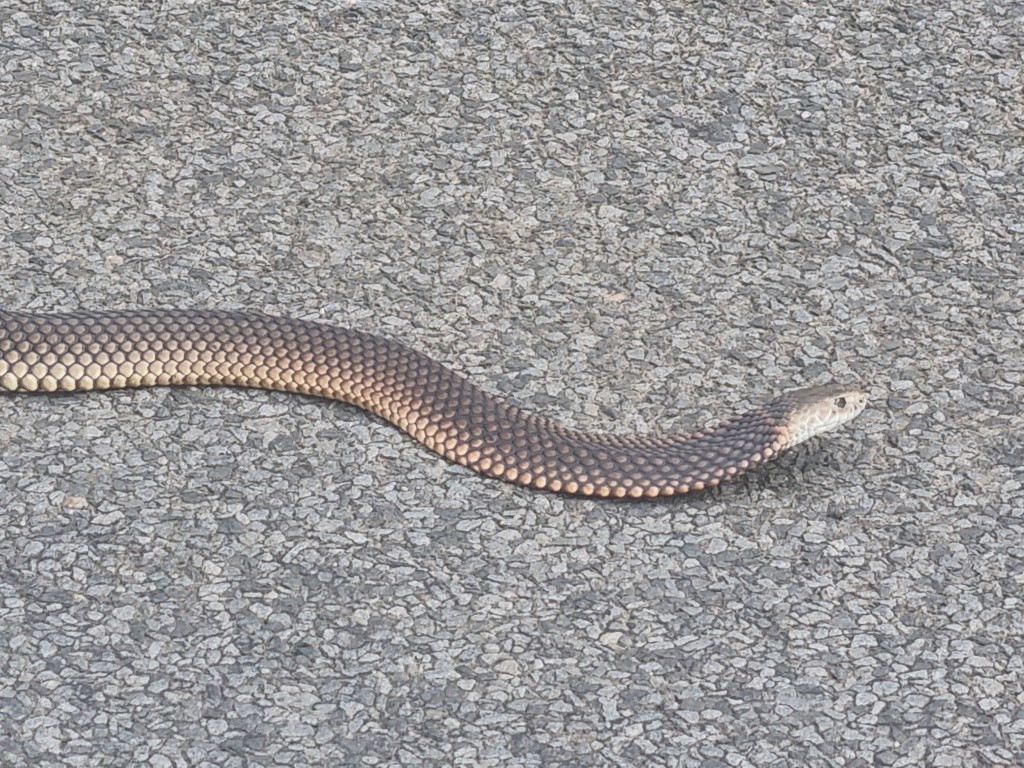
PLUGS
The Overland Train
You can wheel your bike on and off at any of the stations. If you embark in Melbourne or Adelaide your bike will go in a luggage car but at intermediate stations it will be in the passenger carriage where there is also room. You don’t book the bike. You mention it in the notes when you book your seat. The conductor calls (phones) ahead and tells you where to stand on the platform. They even serve tea and cake on crockery!
Victorian Regional Cycling Infrastructure
Small and mid-sized Victorian cities are the best provisioned for bikes in Australia. Victoria is consistently good. Being able to take bikes on trains adds to it. A combination of wide streets, decades of activism by Bicycle Victoria and several favourable Victorian Ministers of Transport have normalised bike riding. Compare, for example, Griffith NSW and Horsham Vic. It is a very different experience. Few people in Griffith ride down Banna Avenue. Bendigo, Ballarat, Warrnambool, Shepparton, Horsham, Mildura and Echuca all give us room to ride. Ironically, Albury just over the border does too. That’s another story though and also about the importance of a local hero, Patricia Gould.
Adelaide
This is the easiest capital city in Australia for cycling. There are numerous bike provisions, including this fast-response bike crossing light. CBD bike use is quite high. Adelaide is a pleasure to ride.
Adelaide has not had the pressure of population growth that has kept space from cyclists in other cities. Other cities have focused more on trunk routes and connections. In Adelaide it feels like you can ride on all the streets. It’s not surprising that more rapid urban population growth, in addition to bringing all sorts of other problems, is likely to be worse for cyclists
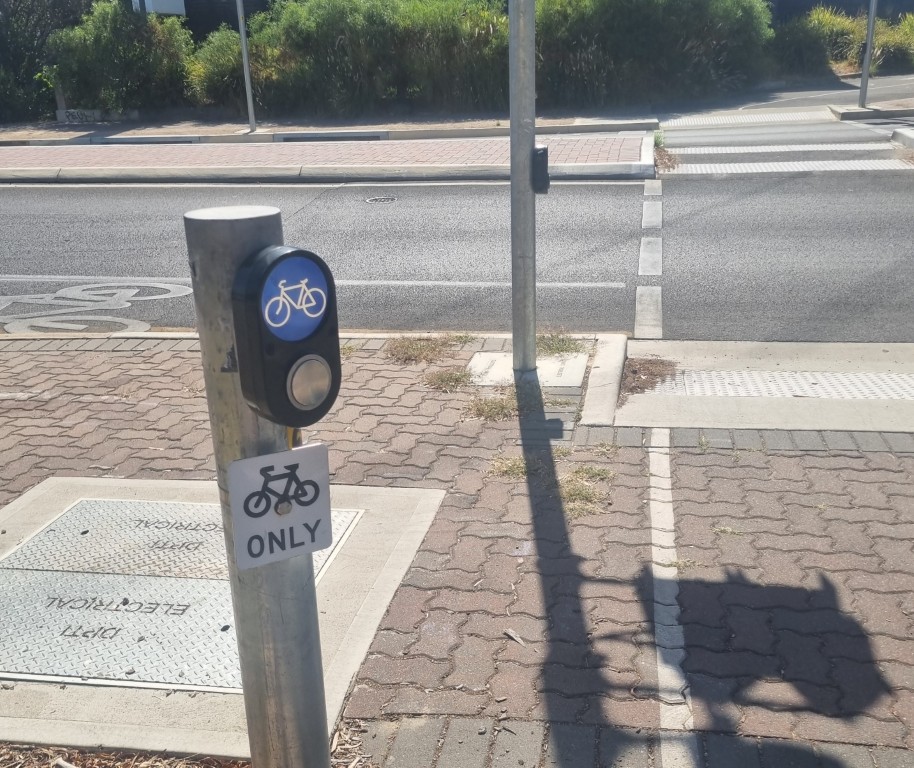

Barcoo Bars Report
Our Barcoo handlebar, and also, a new bike in our range, the Vivente Barcoo, are named after the Barcoo river that feeds into Kati Thanda Lake Eyre
Handlebars are subjective and not a bike part that one person can readily say will be good or bad for someone else.
As a traditional drop bar rider, I don’t expect to really like a bar that’s in the sit-up style. Not that on drop bars we don’t sit-up anyway.
The GC1 grips have so much surface that you can lean down on them slightly more without hurting your hands. Therefore, you can bend over slightly more. After the first few kilometers I moved the bars down three spacers.
There are several different ways you can put your hands on the grips. You can move around, including to the taped junctions of the outside bar and the cross bar. That is a more aero position. That does allow a complete change of position, but you have less steering being in closer to the axis. That position is best for good roads and lower speeds.
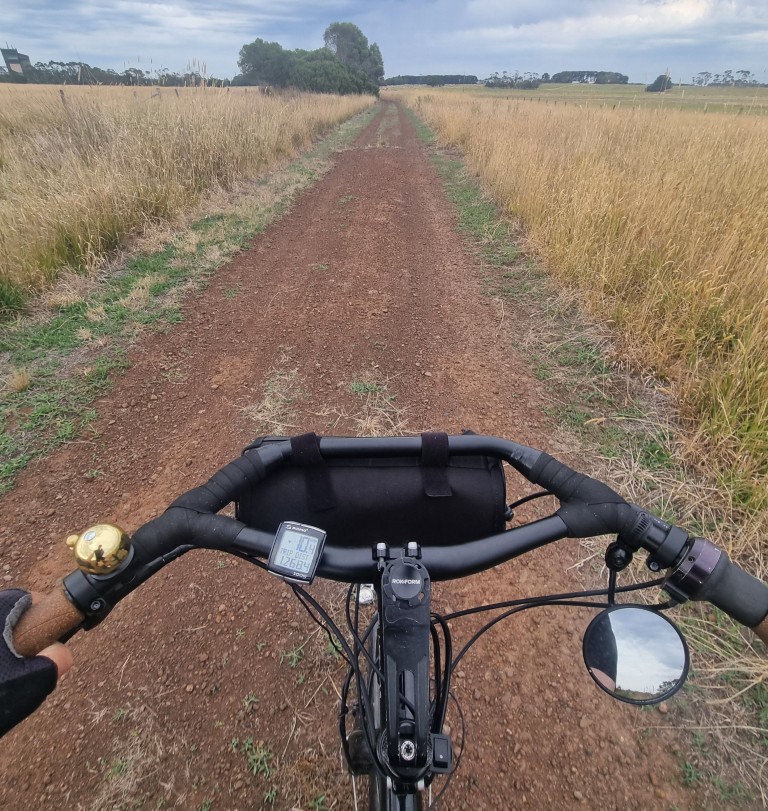
Having done the Munda Biddi Trail on a Swabia, for me, the Barcoo bar would have been a better choice.
In the CBD of Adelaide, the (720mm wide) bars felt a bit wide and vulnerable in traffic. Probably in part that I wasn’t used to riding in city traffic just then. I wouldn’t ride this set-up in inner Sydney (if I could have a Swabia). But, out in the country, the Barcoo bar is a strong a contender for me.
Steering a drop-bar bike is more from leaning on the side of the saddle. Steering this sweptback-bar is more by pushing a side of the bar down.
In descents, you can get down low. Not as much as on a drop bar. But more than on a trekking bar.
If this 1,500 km had been entirely on tar, the Barcoo bar would likely have been fine but so would other bars. However, on this ride, there were regular gravel and bumpy road sections. The width gave the added steering. The larger surface-area of the GC1 grips in the swept back position were comfortable on what were often jarring surfaces.
SGB bag
The Skingrowsback bag (SGB is made in Melbourne) was fine. Did the job. but a bit small at first. Unlike an Ortlieb HB bag, it stays on the bike, so I used a Topo shoulder bag too. The SGB HB bag has less capacity but for those few essentials it is fine.